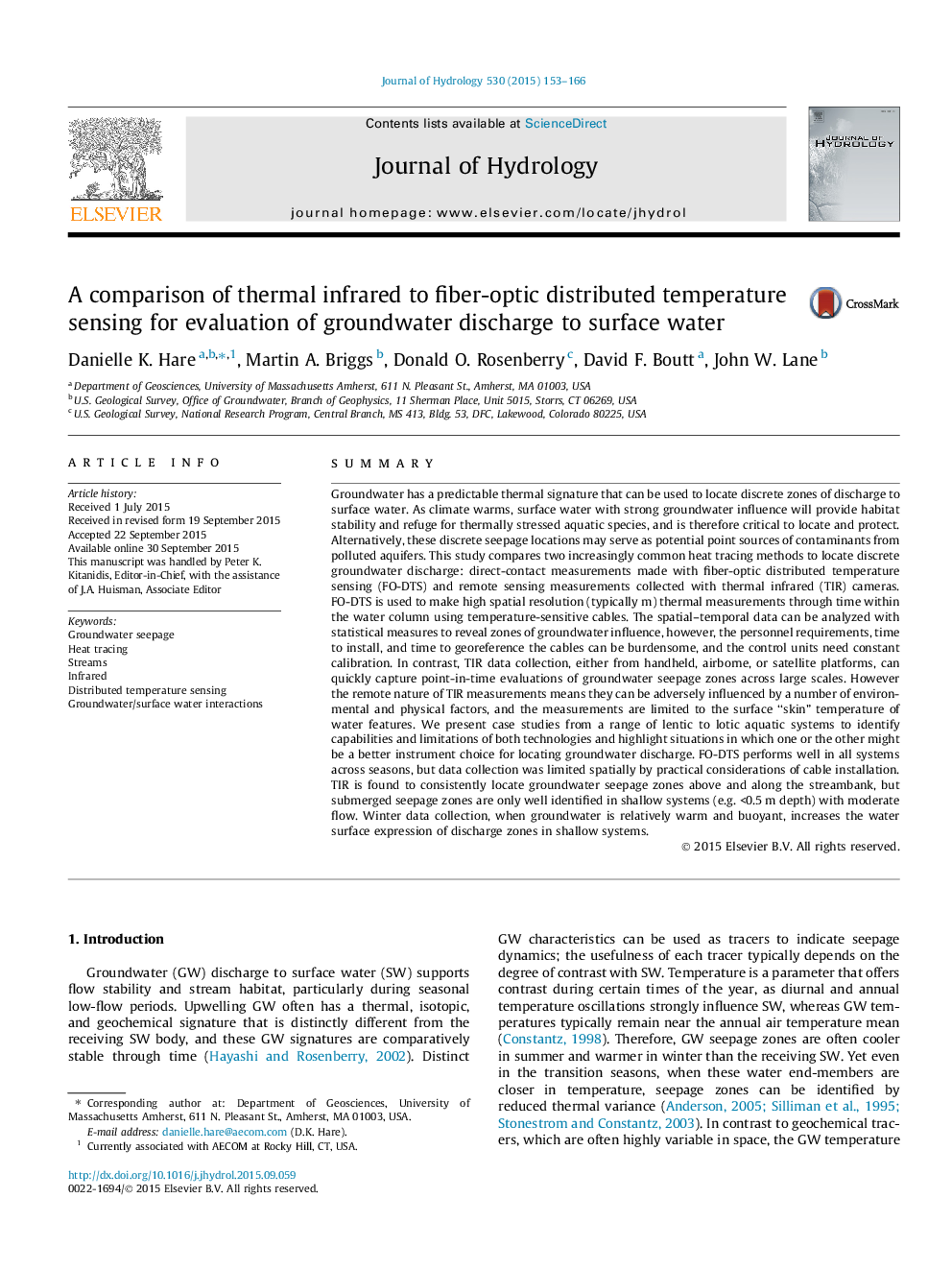| کد مقاله | کد نشریه | سال انتشار | مقاله انگلیسی | نسخه تمام متن |
|---|---|---|---|---|
| 6410195 | 1629921 | 2015 | 14 صفحه PDF | دانلود رایگان |
- TIR and FO-DTS provide rapid spatial characterization of groundwater seepage.
- FO-DTS collects temporal data, which more effectively identifies diffuse seeps.
- TIR images water surface temperatures, submerged seepage may be hidden.
- TIR data collection is sensitive to temperature-induced density effects.
- TIR can cover large spatial scales efficiently.
SummaryGroundwater has a predictable thermal signature that can be used to locate discrete zones of discharge to surface water. As climate warms, surface water with strong groundwater influence will provide habitat stability and refuge for thermally stressed aquatic species, and is therefore critical to locate and protect. Alternatively, these discrete seepage locations may serve as potential point sources of contaminants from polluted aquifers. This study compares two increasingly common heat tracing methods to locate discrete groundwater discharge: direct-contact measurements made with fiber-optic distributed temperature sensing (FO-DTS) and remote sensing measurements collected with thermal infrared (TIR) cameras. FO-DTS is used to make high spatial resolution (typically m) thermal measurements through time within the water column using temperature-sensitive cables. The spatial-temporal data can be analyzed with statistical measures to reveal zones of groundwater influence, however, the personnel requirements, time to install, and time to georeference the cables can be burdensome, and the control units need constant calibration. In contrast, TIR data collection, either from handheld, airborne, or satellite platforms, can quickly capture point-in-time evaluations of groundwater seepage zones across large scales. However the remote nature of TIR measurements means they can be adversely influenced by a number of environmental and physical factors, and the measurements are limited to the surface “skin” temperature of water features. We present case studies from a range of lentic to lotic aquatic systems to identify capabilities and limitations of both technologies and highlight situations in which one or the other might be a better instrument choice for locating groundwater discharge. FO-DTS performs well in all systems across seasons, but data collection was limited spatially by practical considerations of cable installation. TIR is found to consistently locate groundwater seepage zones above and along the streambank, but submerged seepage zones are only well identified in shallow systems (e.g. <0.5Â m depth) with moderate flow. Winter data collection, when groundwater is relatively warm and buoyant, increases the water surface expression of discharge zones in shallow systems.
Journal: Journal of Hydrology - Volume 530, November 2015, Pages 153-166
